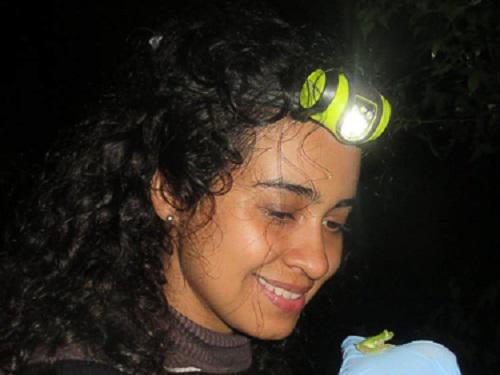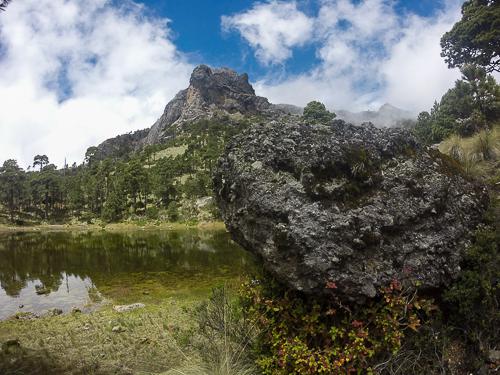Yocoyani Meza Parral
Combining fieldwork with physiological studies, we will assess the upper thermal limit of twelve amphibian species, with contrasting altitudinal distribution. First, we will identify the microhabitat type and microhabitat temperature where organisms are frequently located in the field. Then, we will estimate the critical thermal maximum of amphibians, using a standardized, safe and reliable experiment to determinate the vulnerability of species to climate change. Finally, we will carry out education workshops with the participation of inhabitants of communities, local authorities, educators and conservation managers in the studied region. We are convinced that protecting species’ microhabitat is a relevant action to help amphibians in mitigating the climatic change effects and environmental education plays an important role to get success on this work. Sharing our results with the scientific community and local people will have a high impact in achieving our targets of increasing knowledge about amphibians.

Yocoyani Meza Parral, who is leading the project. ©Amauri Sarmiento-Rojas
Global climate change is one of the main causes of biodiversity loss; thus, it is essential to identify species with greater vulnerability to extinction given the expected increase in global temperature. Among terrestrial animals, ectotherms (like amphibians) are particularly vulnerable to global warming, because their basic physiological functions such as locomotion, growth, and reproduction are strongly influenced by environmental temperature. Scientific studies on thermal physiology for amphibians are scarce but relevant to understand the effects that climatic change will have on species.

“Cofre de Perote” Volcano, in the highlands of our study area. ©Amauri Sarmiento-Rojas
This study will assess the upper thermal limit of twelve amphibian species, with contrasting altitudinal distribution, different life history and locally abundant. The study area is the altitudinal gradient (Gulf of Mexico - “Cofre de Perote” volcano), ranging from 0 to 4250 m a.s.l., where Nearctic and Neotropical faunas converge. This area concentrates many threatened species and high salamander diversity. Unfortunately, this gradient has experienced considerable habitat modification in more than 80% of the area. We plan to collect 15 adult specimens from each species and use them during in situ experiments of upper thermal tolerance. We will identify the behavioral responses of anurans and salamanders in the face of temperature changes, comparing thermal tolerances between species. Our method is non-invasive and does not kill individuals. After the recovery of individuals, we are going to release them in the same location. Additionally, it is essential to complement this study with education workshops in which we explain about amphibian species diversity and distribution along the studied elevational gradient and communicate our results.
The active participation of the local communities is very important for us. We will have at least three local collaborators based at each site, who will have participation in sites selection, amphibian collecting, and carrying out the experiments, as well as during the activities of the educational workshops. Through talks, games and printed information, we pretend to improve the perception that local people have on frogs and salamanders, highlighting their ecological importance and their role as indicators of climate change. Finally, we will encourage local people to take part in amphibian conservation by identifying actions for protecting and restoring their habitats and microhabitats. We are convinced that protecting species ’microhabitat is a relevant action to help amphibians in mitigating the climatic change effects and environmental education is fundamental to get success on this work.